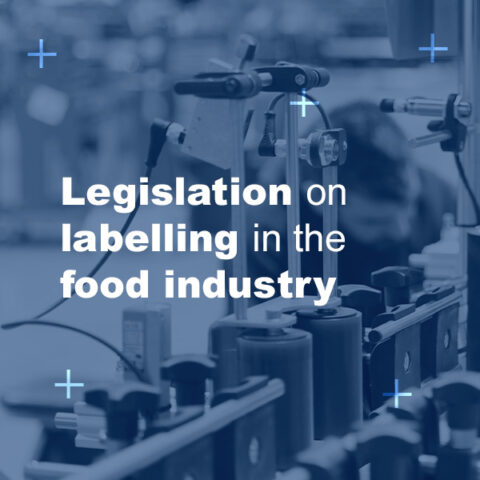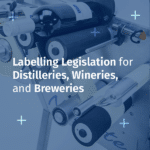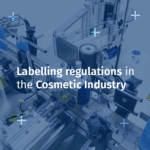Labels are essential in many sectors (such as the food industry) and contain essential information (regulatory/legal standards, compliance, traceability, etc.).
When it comes to designing a label for your product, aesthetics are not enough: certain legal information must be included in order to be distributed.
Legislation on labelling in the agri-food sector
Food labelling is compulsory and must comply with European regulations. Some of the information set out in this regulation helps to prevent food poisoning and allergic reactions, and promotes a balanced diet.
The aim of this regulation is to guarantee a high level of protection for consumers’ health and interests by laying down the compulsory information to appear on packaging. The compulsory information is as follows:
- The best-before date (BBD), preceded by the words “best before…/ by the end of…”, which indicates the time after which organoleptic qualities (taste, smell, etc.) and nutritional qualities (reduced vitamin content, oxidation of lipids, etc.) are likely to be impaired.
- The use-by date (BBD), preceded by the phrase “use by…”, indicates the date beyond which consumption of the product may present a health hazard.
- Identification information such as “production batch” and “contact details of the person responsible”. Under European regulations, no pre-packaged food may be marketed without a statement identifying the batch to which it belongs. This information, combined with the name or company name and address of the operator responsible for the food, guarantees the identification and traceability of the product.
The INCO Regulation
Regulation (EU) No 1169/2011, known as INCO (Information for consumers), was published in 2011. Its aim is to harmonise the labelling of food products in European countries, while providing consumers with the best possible information.
This regulation sets out the rules for labelling foodstuffs, i.e. the mandatory information to be included on food packaging, as well as optional information.
INCO requires professionals to keep a constant eye on the legislation in force (at both European and national level), constantly adapting their working tools and the technologies they use. This also implies the need to train and inform the staff who apply the new legal or regulatory requirements.
Since December 2014, all the mandatory information specified in the regulation must already be present on food packaging, with the exception of the nutritional declaration, which has been mandatory since December 2016.
What information does the INCO regulation require?
- According to INCO regulation n°1169-2011, all pre-packaged foods must include :
- The sales name.
- The list of ingredients.
- Allergens.
- The quantity of certain ingredients or categories of ingredients (if applicable).
- The net quantity.
- Use-by date or minimum durability date.
- Special conditions of storage and/or use (if applicable).
- The name or company name and address of the operator.
- The country of origin or place of provenance (if applicable).
- Instructions for use (where their absence does not allow appropriate use of the product).
- Alcoholic strength by volume (for beverages containing more than 1.2% alcohol).
- The nutritional declaration.
Food hygiene
Food safety is essential in the agri-food sector. Several regulations exist to guarantee the safety of foodstuffs throughout their production, processing and distribution:
- Regulation (EC) No 178/2002, known as the Hygiene Package, lays down the general principles. It places responsibility for food safety on professionals, and sets out obligations such as product traceability, the withdrawal of dangerous foodstuffs and the provision of information to control authorities. It also establishes the European Food Safety Authority (EFSA) and the European alert network RASFF.
- Regulation (EC) No 852/2004 concerns food hygiene and applies to all players in the food sector. It establishes procedures based on HACCP principles (Hazard Analysis Critical Control Points) as part of a health management plan.
- Regulation (EC) No 853/2004 lays down specific hygiene rules for food of animal origin. In particular, it requires health approval and provides technical specifications for each sector. To guarantee a degree of flexibility, this regulation provides for derogations (specific decrees have been published for this purpose).
The label backing
The choice of label substrate is of vital importance. It is essential that the label, printing and adhesive are adapted to the substrate. What’s more, the label must be of high quality so that it is not damaged and transmits regulatory information throughout the life of the product. When it comes to printing, the printer is responsible for defining the material and adhesive for the label according to requirements, while we can provide our expertise on dimensions, shape, etc., to achieve optimum labelling.
Here are a few examples:
- For bottles:
The surface of a bottle is often neither homogeneous nor perfectly cylindrical, which can make it difficult for the label to adhere. What’s more, not all papers are suitable for all bottle shapes, sizes and materials. So there are coated, textured or vinyl papers (PE or PP film) and different adhesives (permanent or soluble).
- For food in direct contact with the labels:
Labels are stuck onto dry, damp, non-greasy surfaces or directly onto fruit and vegetables. There is a risk of peeling. To avoid this, labels should be printed with QUADRI (food-grade ink), on white coated paper or transparent polyester (resistant to rubbing and moisture).
- For frozen foods:
Freezer labels are made from paper materials. They are designed for use in extreme temperatures. Their reinforced rubber-based adhesive ensures reliable adhesion. These (so-called “permanent”) labels offer excellent adhesion. What’s more, they are compatible with polar or non-polar shrink film, glass, jars, cans, plastic bags, etc.
Our labelling solutions for the food industry
CDA offers a wide range of automatic and semi-automatic labelling machines. Our labellers comply with the strict legal and hygienic requirements of the food industry, and can be fitted with a range of options to perfectly match each customer’s specific needs.
If you have labelling requirements for a small production run or one-off activity, our range of semi-automatic labellers is just what you need. Whether it’s the Ninette 2, Ninette Flat or Ninette Auto, our semi-automatic labellers will give you the precision and efficiency you need for professional, regulatory labelling.
If you’re looking to optimise your packaging speeds and need a precise automatic labeller, we offer the Solo range (1 label applied) and the Ninon range (up to 4 adhesive labels applied per container).











